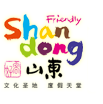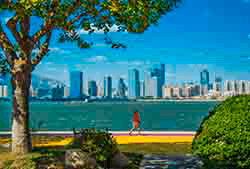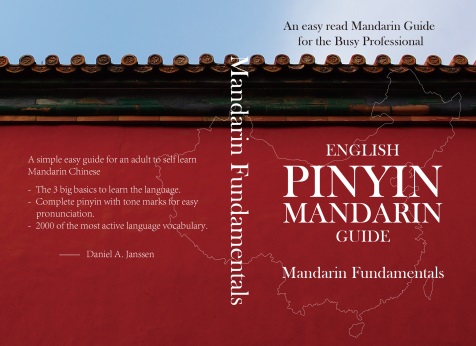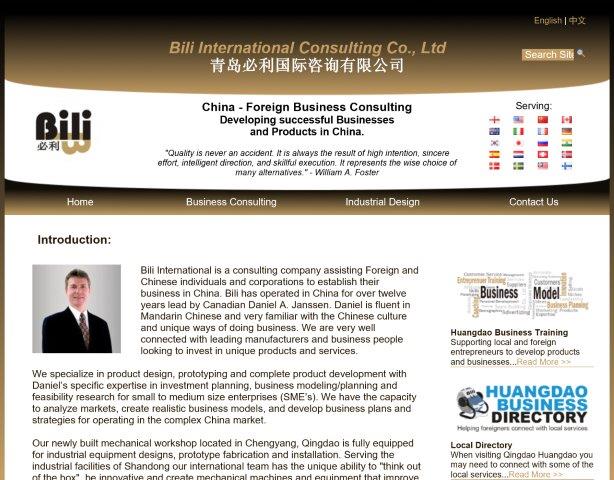MyHuangDao.com
A resource for foreigners that are living, working and or traveling from Qingdao or Huangdao, Shandong, China.

Thanks for visiting!
We are building the most comprehensive English based website to support foreigners living and working from this area. If you would like to be involved and/or cooperate in the development share your good ideas or offer products and services, please [contact us].
Serving:
Essay on China Culture, Policy and Management by Lena Lee
Module title: Cultural Policy
Essay Brief: What is the scope of cultural policy? Discuss one of the contemporary challenges for cultural policy-making as explored within the module.
Date of submission: 19th, April 2017
Introduction
In the field of cultural policy there has been much discussion of what constitutes its subjects mostly revolving around excellence versus access and what objects of cultural policy are trying to achieve. The relation between the neo-liberalism in economic changes and the justification of cultural policy changes are also examined.
Originated from Europe and North America, however, the study of cultural policy has been much “embedded within Anglophone and European societies” and their correspondent political system (Lee and Lim, 2014, p.1). In the discourse, “culture’s autonomy and its role as a civil sector is somewhat taken for granted, though it is a product of a lengthy historical process that has not yet taken place or is still ongoing in societies beyond Western democracies” (Lee and Lim, 2014, p.2). This applies to the study of cultural policy as it takes for granted the backdrop of culture, state, politics and bureaucracy without elaboration and differentiation from other models of political regimes in the world.
Public policy study in the Europe and the US has been influenced by individualism and neo-liberalism (Spicker, 2013, p.171-p.200). Similarly, in the study of cultural policy there is suspicious attitude towards government for centralisation of culture (Miller and Yudice, 2002, p.2). This essay argues that in China the relation between the state and culture is quite different and it is the government that uses culture to promote the needs of the state and national identity.
Therefore, while the existing theories of cultural policy do share universal principals, acting as an instrumental tool (Gray,2002, pp.77-P.90) for example, this discipline is culturally and socially contextualised and intertwined with a nation’s grand political agenda. This essay will look at China as a case study.
Historical background
Since the economic reform in 1978, China has embarked on an economic marketisation. Internationally, from the late 20th century to the early 21st century, the waves of ICT revolution, knowledge economy and creative industry have transformed many countries. Faced with the need for internal development and the international market pressure, it was natural for China to adjust its overall policies at the beginning of 21st century (Li and Zhang, 2009, p.33). The changes to cultural policy, therefore, were a very prominent one.
Before 1978, Chinese Communist Party (CCP) managed cultural work in a way that it would reflect its ideological will and political vision (Shan, 2014, p.116). As government grants recipients, the state-owned cultural institutes played a key role during this process. After the economic reform, marketisation created unprecedented opportunities as well as “a whole range of challenges to the state ideology, especially in the cultural domain regarding its cultural policy” (Tong and Tung, 2012, p.265).
In the study of cultural policy in China, two major sources come first: reports released from the meetings of National Congress of the CCP and the Reports on the Work of the Government each year (Li and Zhang, 2009, p.33). From 2000 to 2015 the Chinese government initiated a series of reforms in cultural policy. Three themes were recognised chronologically: the importance of “cultural industry”, “the deepening reform of cultural system”, and “the improvement of public cultural service” (Keane and Zhao, 2014, p.159-p.169; Li and Zhang, 2009, p.34-p.41). At the same time, the recognition of “cultural industry” meant that “culture” was integrated with market, economy, management, mass production and dissemination, technology, cultural service and consumer rights for cultural products. However, since “culture” had always connotated with the state or national ideology, this influence still exists, albeit to a lesser degree (Tong and Tung, 2012, p.265).
Cultural policy
The “culture” of cultural policy:
While in the west the persistent debate on the remit of culture in cultural policy always focused on the “artistic activities alone or a way of life” (Arnold, 1869, p.53; Gray 2010, Hesmondhalgh 2005; Loosely 1995; MacGuigan 1996), the picture is rather different in China. The art and literature history in the 20th century of China no doubt reflects the close relation between culture and politics. Before 1978, “all forms of art were conceived of as an integral part of an enormous political machine operated by the central core of the Party” (Tong, 1994, p.110). After the economic reform, instead of being driven by political ideology, culture started to boom as a result of commercial development (Tong, 1994, p.117).
Cultural industry, as part of cultural policy spectrum, is a highly-contested concept. In the UK, the creative industries include “advertising and marketing, architecture, crafts, design, graphic and fashion design, film, TV, video, radio and photography, IT, software and computer services, publishing, museums, galleries and libraries, music, performing and visual arts”, with the recognition and emphasis on individual creativity (DCMS 2001, p.4). Although in China the “cultural industry”, or sometimes called “creative industry” recognises creativity, cultural policy still ranks “social benefits in first place” and is guided by the country’s political agenda (Shan, 2014, p.116; the 13th Five-Year Plan for Economic and Social Development of the People’s Republic of China, 2016).
In Western democracies, however, “the agents of the field of culture and the arts usually claim that artistic production and distribution should happen on the basis of individual and institutional autonomy and independence vis-à-vis morals and political and economical interests” (Vestheim, 2012, p.531). This forms a sharp contrast between China and the European societies.
The “policy” of cultural policy:
The scope of cultural policy in terms of governance is a combination of “regulation and support or promotion of cultural activities” (Bell and Oakley, 2015, p.47). To regulate cultural production and consumption, cultural policy can impose “censorship”, grand “protection”, “ownership” etc., “often with the aim of developing national culture, promoting the macro environment for creative business”. In terms of support, it means “patronage”, “state funding” etc. (Keane and Zhao, 2014, p.156).
While there has been much study of the “culture” side of this debate, it is too easy for scholars to ignore the “policy” aspect of cultural policy (Barker, 2004, p.40; Hesmondhalgh, 2005, p.96). After all, “the cultural policy is the branch of public policy concerned with the administration of culture” (Bell and Oakley, 2015, p.45). This leads us to ask: what is the nature of public policy then? At very least we know there are elements of instrumentality and government mentality in public policy. In other words, it must have an intention for social issues (Gray, 2007, p.205), and therefore so does cultural policy.
Similarly, the relation between the cultural policy and the whole society is also worth exploring. This is demonstrated in Mulcahy’s study of the “ecological complexity” of public policy: cultural policy has a great number of stakeholders and “does not exist in isolation from government activities and choices in a whole host of policy/political domains”, such as “economic policy, welfare and social policy, foreign policy and so on” (Mulcahy,2006, p.268; Bell and Oakley, 2015, p.46).
With the above two points combined (political-economic environment and intentionality), now we shall discover the motives for government interventions in the arts and culture. There are a few aspects which need to be highlighted: first is the notion of “cultural politics”. This leads us to question: What kind of culture(s) and whose culture(s) are represented and why? Barker argues that “all forms of cultural representation are intrinsically ‘political’ because they are bound up with the power that enables some kinds of knowledge and identities to exist while denying it to others” (2004, p.41). Indeed, the scope of politics which exist in the arts range from “the content of different art forms, the implications of changes in artistic modes of expression, the ways in which politicians have dealt with the arts and individual artists” (Gray, 2000, p.3). What we should bear in mind is that with the expanded support for different art forms in cultural policy, “the purpose of including certain types of culture and not others remain a highly normative one” (Bell and Oakley, 2015, p.20). This could range from a desire for “national glory”, education, social planning, commercial to political support or political legitimate (Pick,1988, p.113-p.128).
Cultural Industry in China
Cultural policy is closely related and responsive to the national political agenda. Indeed, no cultural policy operates “in isolation from boarder pressures within society”. It reacts timely to “the changing, competing, and pressuring re-structuring of society” (Gray, 2007 p.205). In China, since the opening reform, the government’s agenda has been focused on economic development, modernisation and national-building (Mao, 2008).
It is in response to government’s priorities that cultural policy started to act as a complementary instrument to achieve economic objectives. In accordance with the economic reform, on the one hand, from 2003 some state-owned cultural institutes began to be transformed into “industry” and “enterprises” (Keane and Zhao, 2014, p.156). On the other hand, due to its remaining political control, some state-owned cultural institutes were kept and continued to be funded by government (national museums, traditional performing arts etc.) as a way of promoting national culture and image (Mao, 2008). The government’s support for both private and public interest reflected in cultural policy in China shows it is much bonded to the nation’s political agenda.
Therefore, it is not difficult to see the Chinese government’s motives in its cultural policy. Due to its potential to attract private and foreign capital as an economic drive, the development of cultural industry has been highly promoted and encouraged. On the other hand, however, “traditional Chinese art, music and performing arts, long dependent on state subsidy are deemed to represent core cultural values and have remained fully or partially state owned” (Shan, 2014, p.116).
Another similar argument can be seen in the attachment policy revisited by Gray (2016, p.316) where he argued that “a top-down instrumentalisation of the arts where demands are made by political actors from other policy sectors for the arts to become focused towards non-arts policy concerns” (Vestheim 1994; Gray, 2007, 2008; Gibson 2008), cultural policy becomes attached to wider public policies. In the discussion of the relation between culture and creativity for example, “creativity, […] is an essential prerequisite for innovation, and innovation is the driver of technological change, which in turn boosts economic growth” (Throsby, 2009, p. 182).
In China, under the national economic development, it is important for us to also see reforms of other public polices including “education, health, technology, manufacturing” etc. (Keane and Zhao, 2014, p.158). Among them, one focus is China’s technological modernisation. In the Chinese government’s support for “cultural industry” and the “shift from culture purely as propaganda toward culture as ‘pillar industry’ in the most recent 13th Five-Year Plan”, the notion of using the culture industry to drive technological innovation has become more manifest (China Ministry of Culture, 2017).
Against the background of entering the World Trade Organisation and its resulting western influences, as well as the 2008 financial crisis, China’s government came up with a solution of soft power. “The capacity to innovate” is deemed critical by government “in enhancing soft power and the competitiveness of a nation’s culture” (Report to the Seventeenth National Congress of the CPC, 2007). The “cross-fertilization of technological innovation and cultural creativity” has now become a new development model (Keane and Zhao, 2014, p.165). As we can see, although culture policy in China still shares the instrumental functions, it is geared towards to social development.
However, during this process cultural policy has faced with several challenges. As a newly-born hybrid burdened with both the mission of ideological promotion and economic development cultural policy finds it difficult to traverse the thin line between the role of political regulator and the intangible hand in the increasingly open market (Fung, 2014, p.53). Since the emergence of new media and the cultural-industry related technology, these industries are welcomed and regarded as liberal by the people as they provide a platform them to take part, to express their ideas as well as to show creativity. In this sense, cultural industry could “easily arouse sentiments, reshape ideology, and mobilise the public” (Fung, 2014, p.57). In line with its soft power agenda, the state has to censor the content to protect its political interests. During the process, inevitably conflicts between the official ideology and the “western ideology”, “unhealthy ideas” including politically sensitive topics arise. Take the online-gaming industry for example, learning from the western technology and “foreign mode management”, it allows users to be exposed to western culture and thus helps to shape and influence the Chinese pop culture in contemporary China (Fung, 2014, p.54-p.56).
National identity
As Throsby argues, “explicit economic policies can have a hidden cultural policy” (Throsby, 2009, p.180). The cultural policy can act as a vehicle to construct a shared national identity and provide legitimate political regimes via education. Indeed, Scheff (1994) points out that discussions of national and cultural identity […] – “mostly focus on the cognitive […] which are important components of national and cultural identity” (Fung, 2014, p.55). This can be argued by his instrumentalism in education: “the objective of cultural democratisation is the aesthetic enlightenment, enhanced dignity, and educational development of the general citizenry” (Mulcahy, 2016, p.xviii).
Red Tourism, as part of Chinese tourism development, has been promoted by the China National Tourism Administration, State Council, General Office of the Central Committee of the Communist Party of China since 2004. It refers to a type of tourism “where Chinese people visit locations of historical significance to Chinese Communism ‘to rekindle their long-lost sense of class struggle and proletarian principles’” (Li et al., 2010, p.101). The significance can either mean the history of the CPC or the Chinese revolution. In compliance with the free access to museums document issued by the government, access to memorials and museums in the red tourism zones are also guaranteed. Young people, as consumers of a more global cultural tastes, are the targeted audience. Educational tours, free participation in the performances in the museums or memorials are also encouraged. By being shown historical objects or taken on tours guided by on-site teachers, these young cultural omnivores are supposed to learn about the history of Communist Party and form a Chinese national identity and sense of pride (Li et al., 2010, p.101;) as well as educated about the political legitimacy (Lin, 2015, p.328).
Culture
Besides cultural policy’s administrative role, we argue that cultural policy is deeply embedded within a country’s culture and tradition (Tong, 1994, p.112). Confucian cultural heritage values “loyalty, hard work, education and a sense of collective responsibility, which affects the way society is organised and coordinated” (Rozman, 1991). Therefore, Confucian heritage not only has a long-lasting influence in Chinese culture, it also influences Chinese government and its governance (East Asia). For example, in the discussion of modern New Confucianism, government in East Asia is perceived as a “positive drive for social stability” (Tu, 2000, p.205). Government, therefore, has been expected to be “responsive to the needs of the citizens through prioritising the creation and maintenance of social order and harmony and the uses of moral persuasion” (Tu 2000, cited by Lee and Lim, 2014, p.4). The way the state interacts with, supports, represses or regulates different cultural forms is highly selective and contingent…” (Bell & Oakley, 2015, p.16), which reflects the value and culture of policies. This is not only reflected in the narratives of government’s reports and documents (putting the society and the public’s benefits in the first place), but also its support for certain art forms. Looking at the latest report from the China Ministry of Culture in the nation’s 13th five-year plan, the direction of cultural policy in the next five years will be promoting traditional Chinese art forms, Chinese intangible cultural heritage, and any other art forms that demonstrate Chinese people fine traits and tradition and that represent nation’s positive image (Ministry of Culture, 2017).
Conclusion
Believing that social relations are constructed according to time and space, this essay argues that cultural policy is also a reflection of the social, cultural as well as political perspectives of a nation. With scant academic research specifically focusing on China’s cultural policy to refer to, this essay aims to shed some lights on how cultural policy in China is managed politically and economically.
To this end, in the beginning the background of China is introduced in the last 40 years and the system reform among state-own cultural institutes. Then it points out that the concept of “culture” is different in China’s context, from a pure propaganda tool to both a political regulator as well as initiator in the market. This essay also argues that as a subset of public policy, cultural policy is intended to resolve issues emerging within society. This leads to the exploration of the government’s motives behind its cultural policy. Again, it is proposed that the motivations are highly contextualised and thus distinct in China society.
Cultural industry in China has been the main spectrum of China’s cultural policy. In response to the national economy and the opening reform, creativity and innovation has increasingly gained weight in the cultural industry as it is believed to bring economic growth and technological modernisation. Internet, new media developments and the online-gaming industry are fast-growing sectors. In the meantime, however, these industries are also heavily censored under China’s political system and agenda.
Red tourism, another aspect of cultural policy, is discussed to highlight the educational effects of the cultural industries in shaping young people’s national identity. These younger generations, however, are also recipients of western influence and culture. Lastly, this essay contends that culture and tradition still exercises influence on a nation’s political agenda. Confucian culture has some influence in shaping Chinese government mentality and thus putting society and the nation in front of the individual, even in the cultural industry.
Therefore, this essay maintains that when we study a country’s cultural policy, the situatedness – context, culture, time – should all be taken into consideration as these provide a threshold into the broader issues of society.
Bibliography:
Barker, C. (2004). The Sage Dictionary of Cultural Studies. 1st ed. SAGE Publications Ltd.
Bell, D and Oakley, K. (2015). Cultural Policy. Oxon: Routledge.
Chinadaily.com.cn. (2007). Report to the Seventeenth National Congress of the CPC. [online] Available at: http://www.chinadaily.com.cn/hqzg/2007-10/31/content_6220592.htm [Accessed 19 April. 2017].
Gov.uk. (2017). Creative Industries Mapping Documents 2001 – GOV.UK. [online] Available at: https://www.gov.uk/government/publications/creative-industries-mapping-documents-2001 [Accessed 19 Apr. 2017].
Gray, C. (2000). The politics of the Arts in Britain. 1st ed. New York: St. Martin’s Press.
Gray, C. (2002). Local Government and the Arts. Local Government Studies, 28(1), pp.77-90.
Gray, C. (2007). Commodification and Instrumentality in Cultural Policy. International Journal of Cultural Policy, 13(2), pp.203-215.
Heng, S. (2008). China’s Cultural and Intellectual Rejuvenation. Asia Europe Journal, 6(3-4), pp.401-412.
Keane, M. (2000). Cultural policy in China: Emerging research agendas. International Journal of Cultural Policy, 6(2), pp.243-258.
Li, H., Zhang X.M. (2009) ‘Contemporary Cultural Policy in China in 10 Year’, Report on Development of China Public Services of Culture. Available at: http://www.cassrccp.com/uploads/soft/130326/8.%E5%AD%A6%E8%80%85%E4%B8%93%E6%A0%8F%E9%A2%91%E9%81%93%E8%B5%84%E6%96%99/%E6%9D%8E%E6%B2%B3/%E6%9D%8E%E6%B2%B3%E7%AD%89%EF%BC%9A%E5%BD%93%E4%BB%A3%E4%B8%AD%E5%9B%BD%E6%96%87%E5%8C%96%E6%94%BF%E7%AD%9610%E5%B9%B4.doc (Accessed: 19 April 2017).
Li, Y., Hu, Z. and Zhang, C. (2010). Red Tourism: Sustaining Communist Identity in a Rapidly Changing China. Journal of Tourism and Cultural Change, 8(1-2), pp.101-119.
Lee, H.K and L, L. (2014) ‘Cultural Policies in East Asia: An Introduction’, in Lee, H.K and L, L. (ed.) Cultural policy in East Asia. 1st ed. London: Routledge.
Fung, A.Y.H. (2014) ‘Online Games and Chinese National Identities’, in Lee, H.K and L, L. (ed.) Cultural policy in East Asia. 1st ed. London: Routledge.
Keane, M and Zhao, E.J. (2014) ‘The Reform of the Cultural System: Culture, Creativity and Innovation in China’, in Lee, H.K and L, L. (ed.) Cultural policy in East Asia. 1st ed. London: Routledge.
Lin, C. (2015). Red Tourism: Rethinking Propaganda as a Social Space. Communication and Critical/Cultural Studies, 12(3), pp.328-346.
Mao, S. (2008). The History of China’s Cultural Policy in 30 Years. Culture Mass. Available at: http://www.ccmedu.com/bbs35_75790.html [Accessed 19 Apr. 2017].
Ministry of Culture of People’s Republic of China (2017), The 13th Five-year Plan of Cultural Development and Reform. Available at: http://zwgk.mcprc.gov.cn/auto255/201702/t20170223_491392.html (Accessed: 19 April 2017).
Mulcahy, K. (2006). Cultural Policy: Definitions and Theoretical Approaches. The Journal of Arts Management, Law, and Society, 35(4), pp.319-330.
Pick, J. (1988). The Arts in a State. Bristol: Bristol Classical Press.
Shan, S. (2014). Chinese Cultural Policy and the Cultural Industries. City, Culture and Society, 5(3), pp.115-121.
Spicker, P. (2013). Reclaiming individualism. 1st ed. Bristol: Policy Press.
Tong, Q. (1994). Power, ideology and economy cultural policy in China. The European Journal of Cultural Policy, 1(1), pp.109-120.
Tong, Q. and Hung, R. (2012). Cultural Policy between the State and the Market: Regulation, Creativity and Contradiction. International Journal of Cultural Policy, 18(3), pp.265-278.
Vestheim, G. (2012). Cultural Policy-making: Negotiations in an Overlapping Zone between Culture, Politics and Money. International Journal of Cultural Policy, 18(5), pp.530-544.
Weiming, T. (2000). Implications of the Rise of “Confucian” East Asia. Daedalus, 129(1), 195-218. Available at: http://www.jstor.org/stable/20027620 (Accessed: 19 April 2017).




